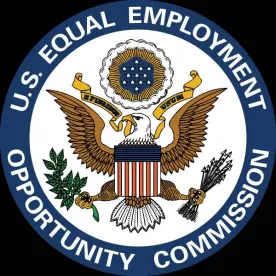On March 4, 2019, the U.S. District Court for the District of Columbia issued an order lifting the stay on the EEO-1 pay data reporting requirements, leaving employers uncertain about their obligations.
Background
As we previously discussed, for the last 50 years, large employers with 100 or more employees, and federal contractors with 50 or more employees, must submit annual Employer Information Reports (EEO-1) to the Equal Employment Opportunity Commission (EEOC), which identifies the number of employees working for the company by job category based on race, sex and ethnicity.
In September of 2016 under the Obama administration, the EEOC finalized regulations expanding the information collected in the annual EEO-1 report to include pay data. The revised EEO-1 form would require employers to collect aggregate W-2 earnings and report the number of employees in each of the twelve pay bands for the ten EEO-1 job categories, classified by race, sex and ethnicity. In addition, the revised EEO-1 form would also require employers to report the total hours worked during the year, which would help explain partial year or part-time employment.
The revised EEO-1 form was intended to combat pay discrimination by identifying wage disparities. However, the revised EEO-1 form was widely criticized by employers claiming that the collection of W-2 earnings, without any context to explain legitimate non-discriminatory reasons for pay disparities (e.g., education, training, experience, tenure, merit, etc.) would unnecessarily open the door to increased scrutiny and investigations. Following the post-election transfer of power, the Office of Management and Budget (OMB), under the Trump administration, issued a memorandum announcing the immediate stay of the revised EEO-1 form, citing concerns that aspects of the new form “lack practical utility, are unnecessarily burdensome, and do not adequately address privacy and confidentiality issues.” In an effort to reinstate the revised EEO-1 form, several advocacy groups, including the National Women’s Law Center, sued the EEOC and the OMB in furtherance of their mission to close the gender wage gap by educating the public and policymakers about pay disparity in the workplace.
Court Revives Pay Data Collection
The OMB’s stay of the revised EEO-1 form remained in effect until March 4, when Judge Tanya S. Chutkan of the U.S. District Court for the District of Columbia vacated the stay. Judge Chutkan authored a 42-page opinion ultimately ruling the OMB’s decision to halt the collection of pay data was arbitrary and capricious. Specifically, the Court found that the OMB’s stated concerns directly contradicted the EEOC’s findings when it issued the regulations in 2016 and the OMB failed to explain these inconsistencies or provide a reasoned explanation for changing its policy. The Court noted that employers had more than a year to collect pay data before the OMB issued the stay, so the reinstatement of the pay data reporting requirement should not have “potentially disruptive consequences.” Still, many predict that the OMB will appeal the decision, which would likely put the implementation of the revised EEO-1 form on hold, yet again.
EEOC Aims to Modernize Data Analysis
Meanwhile, and perhaps in response to public skepticism over how the agency would use pay data information other than as a screening tool to target companies for pay discrimination, the EEOC has been revamping its data analytic practices. The agency hired its first Chief Data Officer, Chris Haffer, tasked with implementing the EEOC’s data analytics modernization program. Haffer intends to create a comprehensive inventory of workforce data, along with analytical tools that the public can access, while protecting companies’ privacy.
The EEO-1 portal will open on March 18, allowing employers to electronically submit their 2018 workforce data by the May 31, 2019 filing deadline (extended from March 31, 2019 due to the government shutdown). Although it is unknown whether the EEOC will require compensation data to be included or whether it will roll-out a delayed reporting deadline, employers should be prepared to comply with the pay data reporting requirement.
Be Prepared and Prioritize Pay Equity
In addition to the ruling reinstating the revised EEO-1 form, state legislatures have been actively passing comprehensive equal pay laws, which have led to an uptick in wage discrimination lawsuits. In New Jersey, the recently enacted Diane B. Allen Equal Pay Act is being heralded as one of the most expansive equal pay laws in the country. Therefore, it would behoove employers to conduct an internal audit to identify any pay disparities and then consult with legal counsel to analyze the bona fide business reasons for any discrepancies to become prepared.





 />i
/>i
